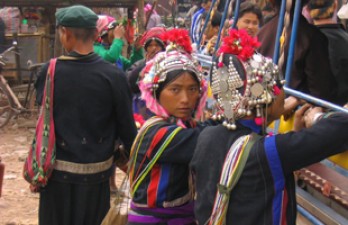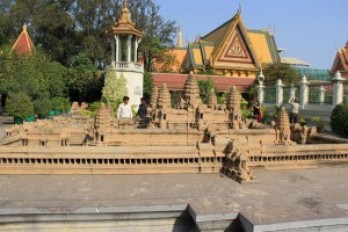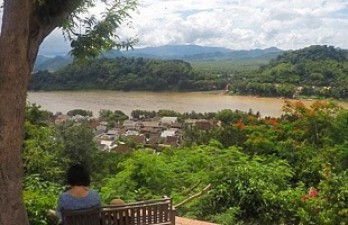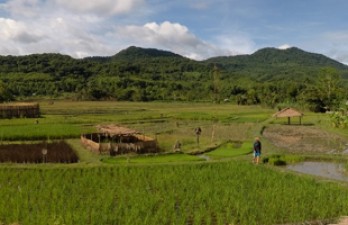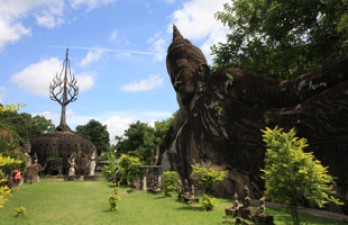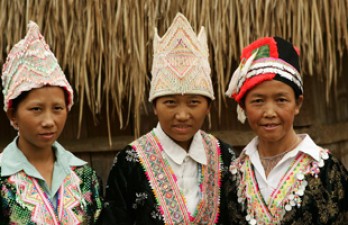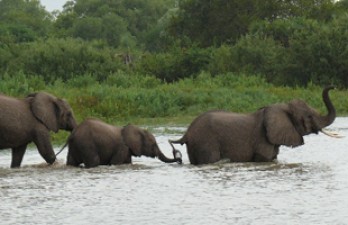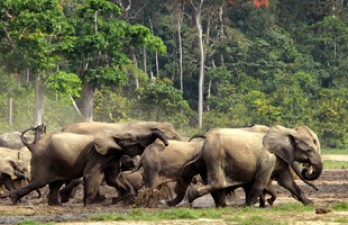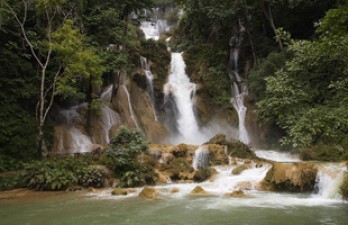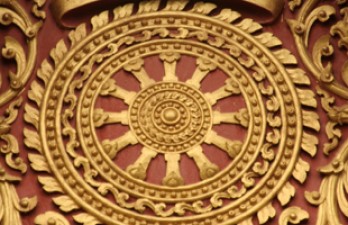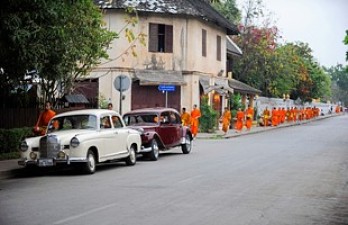Celebrating culture and community: Bunpimay Festival in Laos - Handspan Travel Indochina
2Laos is a stunning country located in Southeast Asia. It attracts tourists through its serene landscapes, ancient temples, vibrant festivals, and rich culture and traditions. One of the most outstanding events in Laos is the Bunpimay Festival. It is the New Year festival in this country. Let’s explore the festival with Handspan Travel Indochina!
Through this blog post, you will find out these pieces of information below.
General information about the Bunpimay Festival
Bunpimay Festival, also called Pi Mai, is celebrated from April 14 to April 16 annually. “Bun” in the Laos language means doing good things. Like the Chol Chnam Thmay festival in Cambodia and the Songkran festival in Thailand, the Bunpimay Festival brings prosperity, happiness, and purity to human life. Bunpimay is an opportunity to nurture and mold national art. The festival is a time of spiritual renewal. At this time, the locals cleanse themselves of the past year's misfortunes and prepare for a fresh start.
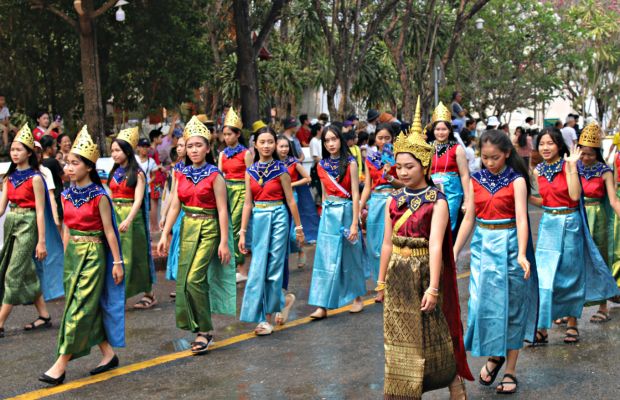
Bunpimay Festival
The first day of the festival marks the last day of the old year. On this day, the Laotians clean their house and the alley, symbolizing the casting out of the past year's troubles. Besides, everyone gathers at the temple to worship Buddha and pray for themselves and their family. The monks take the Buddha Statues from their original position to special temporary easy-to-access places for three days so that everyone can come in and pour perfume water on them. The locals then collect the fragrant water running off the Buddha statues and bring them home. They believe that this water will bring everyone luck and happiness.
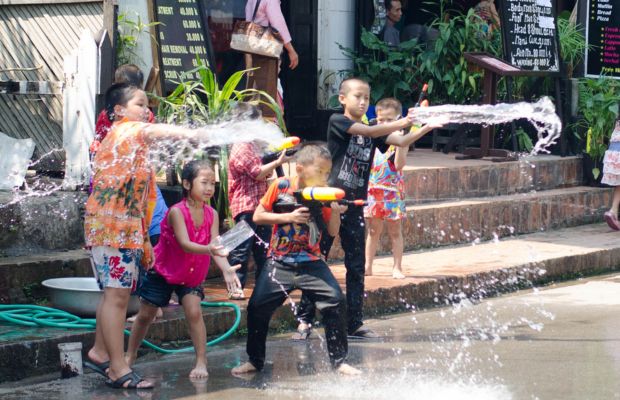
Bunpimay Festival
Whereas, the second day of the festival is the “day of no day”, or “Wan Nao”, a transition day between the old year and the new year. The last day of the festival is also the beginning of the new year when many exciting activities are held. Many families in Laos will celebrate the Baci ceremony. This is an important traditional ritual of the Lao people, to welcome the new year.
Bunpimay Festival’s traditions and customs
Throughout the three days of the Bunpimay Festival, there are many exciting activities. Besides visiting the temples, local people also enjoy water splashing, Soo Kwan, sand stupa building, beauty pageants, etc. Below are some outstanding traditions and customs of the Bunpimay Festival.
Water splashing
One of the indispensable activities in the Bunpimay Festival is water splashing. This is considered the most typical ritual on this occasion. It means purification, washing away all bad luck, illness, and sins of the old year, and welcoming a fresh new year to come. To show respect, young people splash water on their elders to wish them long life and prosperity. Visiting Lao these days, you will catch up with local people armed with buckets, water guns, and hoses, dousing each other with water in a playful and joyous display of unity and merriment. According to the Lao people’s belief, the more water a person gets splashed with and the more wet their clothes are, the happier they will be. They believe they will have a lot of luck during the year, and at the same time it proves that they are loved by many people.
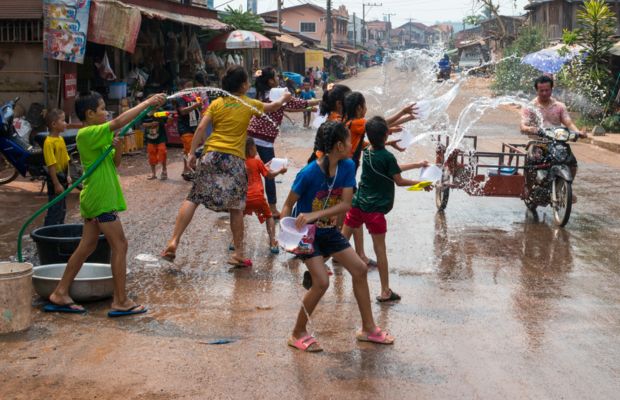
Water splashing in the Bunpimay Festival
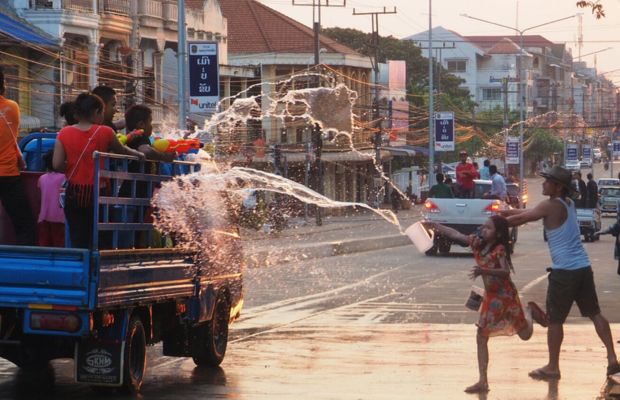
Water splashing in the Bunpimay Festival
Sand stupa building
The sand stupa building is also a featured activity during the Bunpimay Festival. Everyone will gather at the riverbank to bring sand back to the temple to build small sand mountains around the ancient trees in the temple yard. Local people put the largest sand tower in the center with smaller sand towers surrounding it. On the top of the sandy mountain, there are buntings and banners made of colorful silk strips. Some people spread five-colored threads on the top and slopes of the sandy mountain.
Releasing animals
On the Bunpimay Festival, animals like turtles, fish, crabs, birds, eels, and other small animals are set free to do good deeds. Local people believe that doing good things will bring them happiness while doing evil will result in bad consequences.
Soo Kwan
Soo Kwan is another traditional thing to do in the Bunpimay Festival. This activity means tying cotton strings around people’s wrists. On the third day of the festival, local people will come to their relatives and neighbors’ houses to celebrate the new year. The house’s owner then will tie a green or red thread on the wrists of those who come to their house. The thread is the symbol of happiness and health.
Traditional music
Visiting Laos during the Bunpimay Festival, you will also have a chance to enjoy traditional music and performances. Throughout the festival, you can see various cultural performances, traditional music, and dance demonstrations showcasing Laos' rich heritage. Colorful parades featuring intricately adorned floats wind through the streets, accompanied by the sounds of drums, gongs, and traditional Lao music.
Bunpimay Festival in Luang Prabang
Bunpimay Festival is the most vibrant in Luangprabang, with lots of exciting events and activities. Luang Prabang is the ancient capital city of Laos, famous for its outstanding history and tradition. The festival here lasts longer, usually from April 11 to 20.
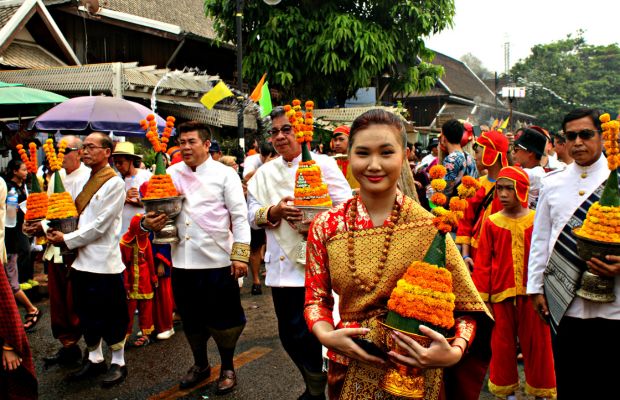
Bunpimay Festival in Luang Prabang
Like other provinces and cities in Laos, the Bunpimay Festival is also outstanding with the water splashing activity. Besides, the festival is more special with the elaborate Nangsangkhane procession that winds its way through the city streets. Lavishly decorated floats adorned with flowers, silk banners, and golden ornaments glide past ancient temples and colonial mansions, accompanied by the rhythmic beat of drums and the melodious strains of traditional Lao music. At the parade, seven girls act as children of Kabinlaphom, the god bringing good things to the Lao people. One of them is the Princess of Spring with a sword in one hand and a fire ring in the other hand. The remaining 6 girls are her sisters. They all sit on a splendidly decorated roadster with brilliant outfits.
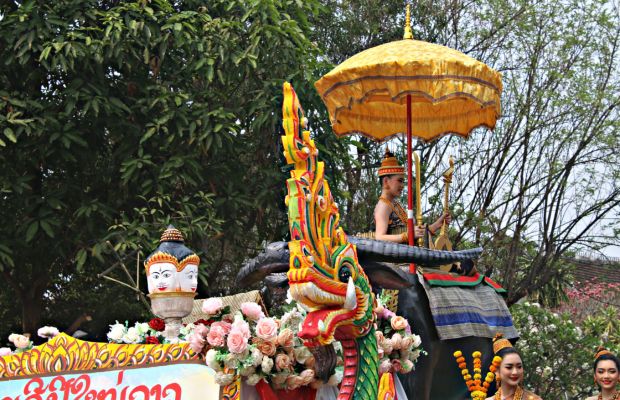
Pimai Queen
As the Bunpimay festival draws to a close, the people of Luang Prabang emerge from the celebrations with hearts full of joy and gratitude. The ancient traditions and customs serve as a reminder of the enduring spirit of the Lao people. As visitors bid farewell to Luang Prabang, they carry with them memories of a festival unlike any other and a deeper appreciation for the rich cultural heritage that makes Laos truly unique.
In conclusion, the Bunpimay festival is a unique festival imbued with the national identities of Laos. If you have a chance to visit Laos during the festival, don’t miss out on the opportunity to immerse yourself in a crowded atmosphere and learn about the culture and traditions of this charming country.
__logo.png)
__hanoi-water-puppets.jpg)
__angkor-wat-blue-reflections.jpg)
__vientiane-buddha-park-monks.jpg)

